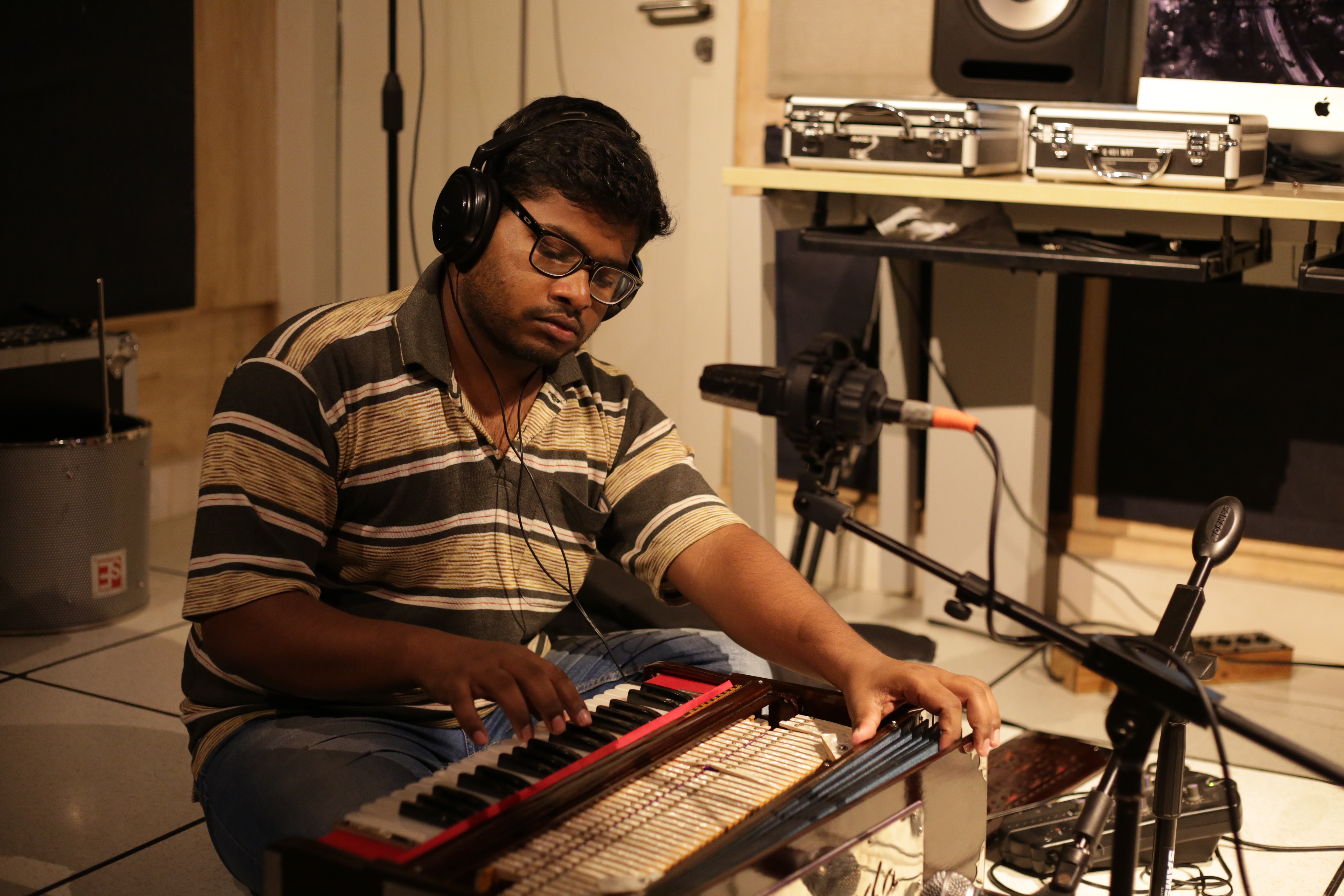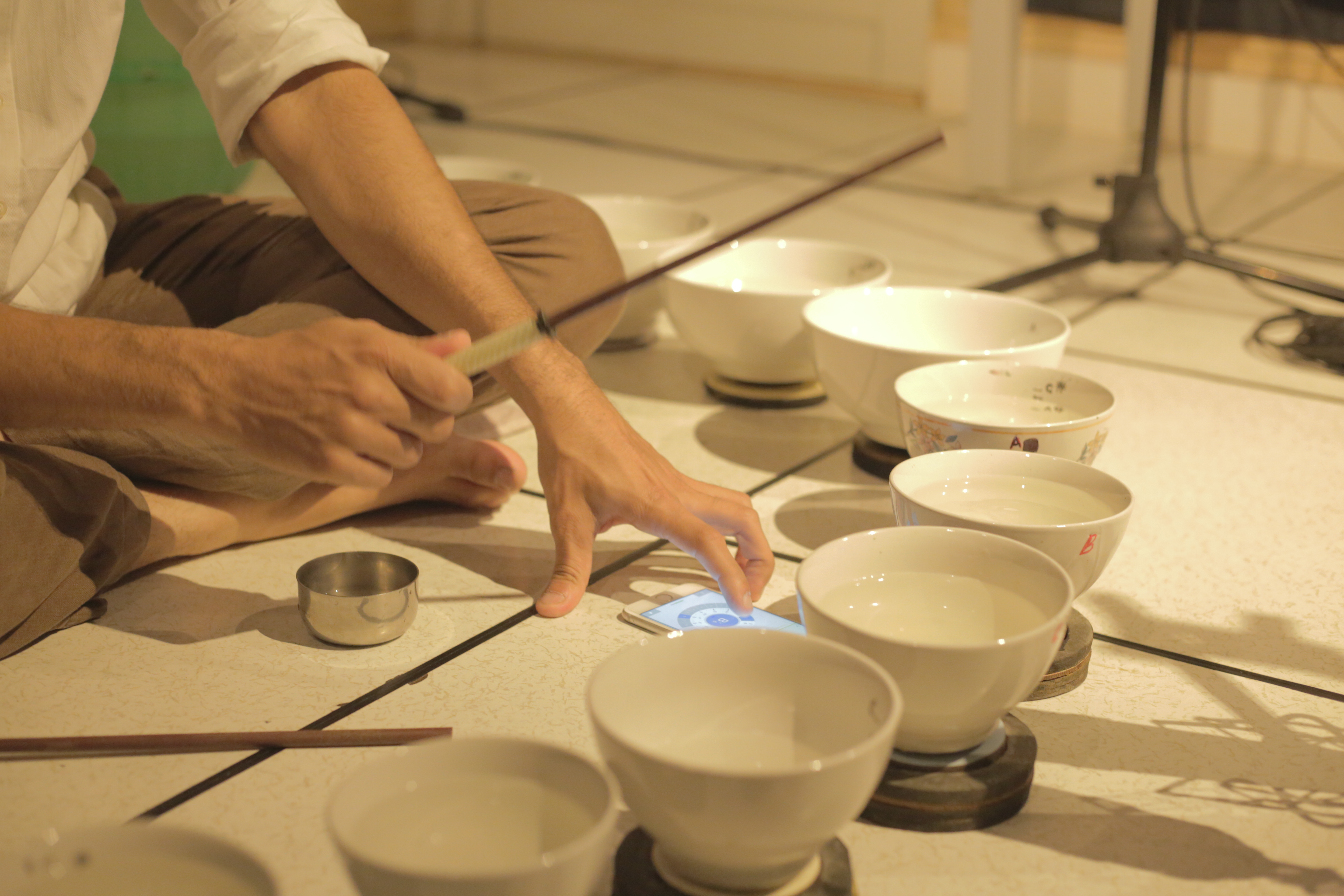Unpacking the timeless sounds of India
ROLI sound designers are recording classical Indian instruments for A. R. Rahman's upcoming soundpack

Ever since six of the first Seaboard RISE instruments were delivered to Chennai in 2015, the exchange of music and ideas between ROLI and the KM Music Conservatory (KMMC) has been fast-flowing. A whole world of music — Indian ragas, Western classical, modern electronica — is taught in the progressive classrooms of a conservatory founded by Academy Award-winning composer A. R. Rahman.
KMMC students embody the next generation of Indian musicians: creative in a huge range of musical styles. They have pushed the boundaries of the Seaboard, showing for example how it is a brilliantly versatile instrument for performing the rapid microtonal bends of Indian classical music. ROLI’s London team has made several trips to help teach electronic music composition and production, and the partnership continues.
ROLI sound designers Rafael Szaban and Mike Bugh are in Chennai this week. Their mission: to work alongside the students and alumni of KMMC to develop new sounds and create A. R. Rahman’s exclusive soundpack for NOISE and BLOCKS.
There is no shortage of instruments (including A. R. Rahman’s first electric organ) or inspiration. At KMMC Rafael and Mike found the perfect sonic environment to capture the sounds of a renowned composer and the students he has nurtured.

The recordings began with recent KMMC graduate Vivek Pal. He played the classic sound of the Harmonium, a pump-organ that first arrived in India in the 19th century. It has remained a favorite in Indian compositions ever since.
The team then recorded the Swarmandal, a harp-like instrument with up to 36 strings that George Harrison played on the Beatles track “Strawberry Fields Forever.” Rafael and Mike also captured the sounds of the Tanpura, a four-stringed instrument that performs the distinctive drone that accompanies an Indian classical composition.
Known for his beautiful sitar performances, Pandit Ravi Shankar is perhaps the most internationally renowned Indian musician in history. The ROLI sound designers and KMMC students were honored to welcome sitarist Pandit Janardhan Mitta, one of Ravi Shankar’s disciples, to record the sound of this ancient instrument. Famous for merging North and South Indian musical styles, Janardhan has over 40 years of experience composing and performing.

More expressive Indian strings were brought into the studio to rival the iconic sitar. Dr Deepak Paramashivan, a KMMC alumni, came in to perform with the bowed sarangi. With up to 37 strings this North Indian and Nepalese instrument proved a particular challenge for Rafael and Mike to record and sample accurately.
As the KMMC is based in Chennai, South India, capturing the sounds of lesser known instruments from this region was an important part of Rafael and Mike's mission. The nadaswaram, a double reeded wind instrument prevelant at South Indian weddings and festivals, was played by a young student called Karthikeyan. Another regional instrument recorded was the veena, which is often used as an alternative to the sitar in South India. The fretted lute-like veena was plucked expertly by the hands of local expert Gayathri in the ROLI sessions, and promises to be a soundpack highlight.
On the fourth day of recording Silambarasam, a fellow of the Tamil Nadu University for Music and Fine Arts, brought along a selection of South Indian percussion instruments, including the ghatam, kanjira and the thavil. Watch Silambarasam record the sound of the mridingam, a double-headed drum (one surface is used as a bass and the other as a treble) made with goat skin below:

Perhaps the most iconic Indian drums are the Tabla, two different sized barrel drums perfect for playing complex patterns and grooves. KMMC faculty master Rajesh Dhavale laid down Tabla improvisations that will form the basis for some distinctive NOISE Groove Kits.
The last couple of days of recording witnessed the return of Yash Pathak, a KMMC alumni who had performed with the Jal Tarang alongside the Seaboard RISE 25 during ROLI's first visit to Chennai in 2015. The Jal Tarang — a collection of pitched bowls of water that resonate like a bell when struck — provided a beautiful, echoey addition to the soundpack. Yash also brought along a collection of smaller instruments for percussion-expert Mike to record, including the Manjeera (small hand cymbals) and Ghungroo (strips of bells worn on dancers' wrists and ankles).
At the end of a long week, the final instrument brought into the studio was the Santoor. This trapezoid-framed stringed instrument is struck by tiny hammers and can have up to 72 individual strings. Watch Anunaad Dalvi, who came to KMMC from Mumbai, recording with the Santoor below:
Once the recordings were over, Mike and Rafael found some time to share their expertise in sound design with KMMC students, giving a lecture that ended with an impromptu musical jam. Their visit to Chennai was challenging but rewarding, and further proof of the benefits of the relationship between ROLI and the KMMC.
It’s far from finished, but the A.R. Rahman soundpack is shaping up to be a beautiful and eclectic collection of timeless sounds.

The expressive sounds of a plethora of Indian instruments were recorded and processed by Mike and Rafael.
Company
Join the ROLI community